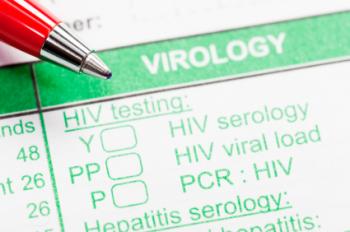Scientists conducting a study of HIV-infected men in Uganda have found that men undergoing circumcision may be at an increased risk of infecting female partners with the disease while the wounds from their surgery heal.

The risk of spreading HIV may increase sharply during the first few weeks after circumcision surgery.
The study arrives in the middle of an international campaign aiming to reduce the transmission of HIV and other sexually transmitted diseases in sub-Saharan Africa by circumcising 4 out of 5 men aged 15-49 in southern and eastern Africa – nearly 29 million men.
According to the World Health Organization (WHO), there is compelling evidence that male circumcision reduces the risk of heterosexually acquired HIV infection in men by around 60%, as well as greatly reducing cases of genital herpes and human papillomavirus.
The WHO state their recommendations “emphasize that male circumcision should be considered an efficacious intervention for HIV prevention in countries and regions with heterosexual epidemics, high HIV and low male circumcision prevalence.”
However, the results of the study, published in PLOS Medicine, suggest that surgical removal of the foreskin from the penis may have an unintended and problematic consequence.
“There is a window of a few weeks after circumcision when the risk that an HIV-infected man could transmit the virus to a female partner actually increases,” explains first author of the study Dr. Aaron Tobian, an associate professor of pathology at the Johns Hopkins University School of Medicine in Baltimore, MD.
“During that time, more HIV-infected men are shedding the virus, and on average they are shedding greater amounts of it, than before circumcision.”
Viral shedding is the name given to the process whereby the virus becomes present in one of the fluids capable of transmitting the virus.
‘Antiretroviral drugs reduce the risk of viral shedding by about 90%’
For the study, researchers from the Johns Hopkins University School of Medicine, the Johns Hopkins University Bloomberg School of Public Health and the Rakai Health Sciences Program in Uganda studied 223 HIV-positive men who had been medically circumcised.
Five milliliters of saline solution was poured over the site of the circumcision near the neck of the penis and tested to assess HIV shedding. Saline solution was applied prior to surgery, during the circumcision procedure and then once a week for the following 12 weeks.
Among the 183 participants who were not taking antiretroviral drugs at the time of the study, the researchers found that less than 10% were shedding HIV prior to their surgery, but almost 30% were shedding HIV 2 weeks after circumcision. As their wounds healed, these percentages dropped sharply to less than 3% after 6 weeks and less than 2% at 12 weeks.
The researchers do not know for sure whether an increase in viral shedding leads to more cases of HIV transmission to partners. “But we do know that HIV-infected men who engage in sex before their circumcision wound heals have higher rates of transmission to their partners,” states co-author Dr. Ronald Gray.
“Also, the higher an HIV-infected person’s viral load, the greater the risk of transmitting the virus to a partner,” he adds. “So it is plausible that the risk goes up during that time.”
Male circumcision programs counsel men to abstain from sex while their wounds are healing, yet according to co-author Dr. Godfrey Kigozi at the Rakai Health Sciences Program, many programs have reported that more than 30% of men being circumcised have sex with female partners during the healing period.
The authors of the study suggest that a solution to this problem may lie with antiretroviral drugs.
“If the men are on antiretroviral drugs, this reduces the risk of their shedding the virus by about 90%,” explains Dr. Tobian. “Thus, it is logical for HIV-infected men to begin antiretroviral therapy at the time of circumcision. However, we will need further studies to find out exactly which drugs and for how long.”